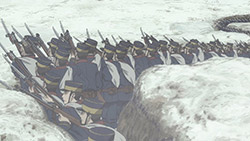 |
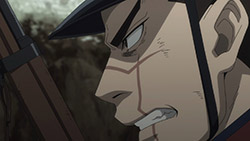 |
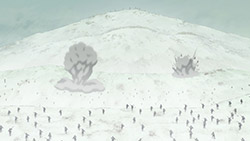 |
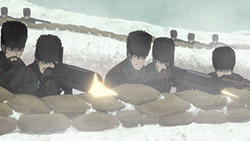 |
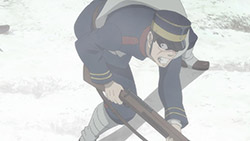 |
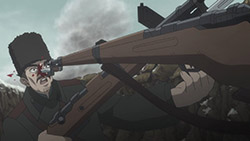 |
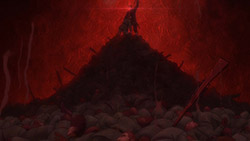 |
 |
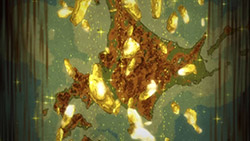 |
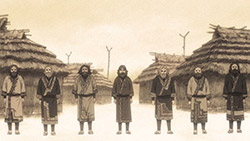 |
 |
 |
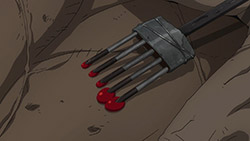 |
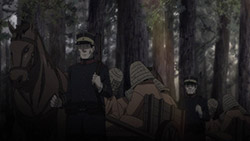 |
 |
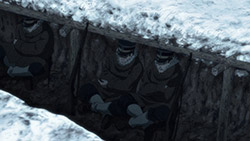 |
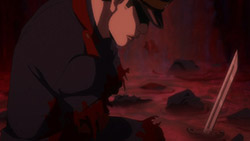 |
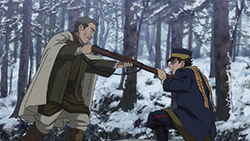 |
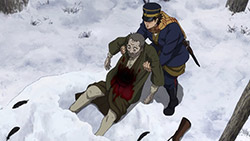 |
 |
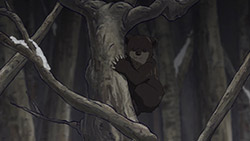 |
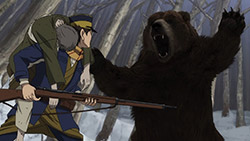 |
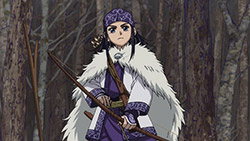 |
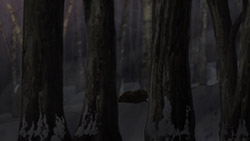 |
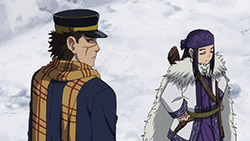 |
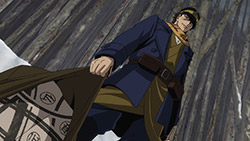 |
 |
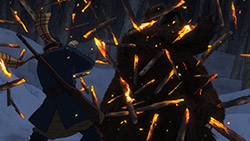 |
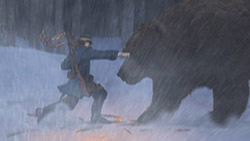 |
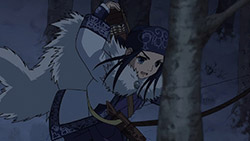 |
 |
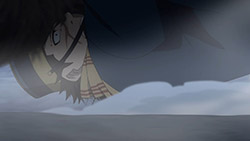 |
 |
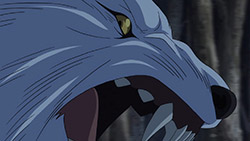 |
 |
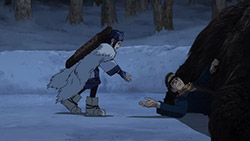 |
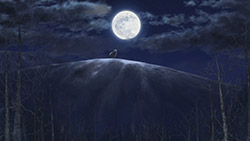 |
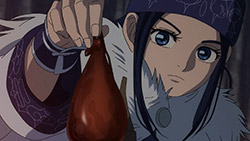 |
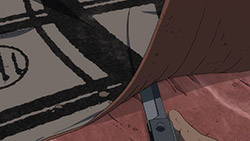 |
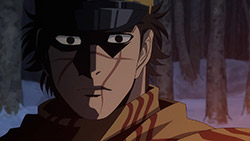 |
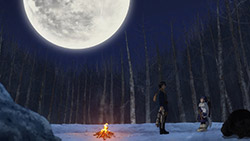 |
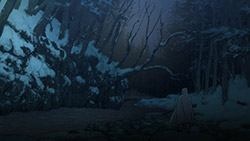 |
「ウェンカムイ」 (Uenkamui)
“Wenkamuy”
I confess, I didn’t really have much interest in the indigenous Ainu people of Japan before Utawarerumono. Perhaps as someone who consumed so much Japanese media, watching shows about space battleships and jumping on goombas, I should have taken more interest in Japanese history and culture, but being a typical dirty gaijin I got all my knowledge about Japan from anime and videogames, and the Ainu do not show up often in those. I can understand why; I’m Australian, and European settlers’ casual genocide of our indigenous population is still something of a sore spot for the nation. Most countries have a shameful chapter in their history like that, some have multiple. The problem with Japan is that some over there have a tendency to take those shameful chapters and bury them (see: World War II), and for those just skimming the surface of Japanese history it’s easy to be distracted by samurai and ninja and miss out on the Ainu. So when along comes Golden Kamuy, which not only feature the Ainu prominently but also directly reference their grievances with the Japanese, I’m all for it. I have not read the manga, but I’m hyped. On a cerebral level, these less-explored parts of Japanese history make for fascinating settings for anime. Historical anime is already rare, and unexplored territory even more precious.
A large part of the appeal of Golden Kamuy, though, seems not be cerebral, but purely visceral. This is an old-fashioned adventure story, with rogue heroes off to dig up Nazi Ainu gold. And it’s a gritty sort of tale too; we start with war and from there it’s one scene of violence and gore. Golden Kamuy is definitely not a show that is shy about getting its hands dirty. Perhaps that why, although a lot of this pilot was actually spent rushing through exposition the entire experience was still, overall, intense. It doesn’t need to be violent and graphic all the time; I mean, the main antagonist of the episode was a taxidermy model but because it was established early on that Golden Kamuy was not afraid to get bloody the atmosphere of danger was maintained.
But more than anything else, I consider the main achievement of this pilot was establishing the characters. We quickly latch onto Sugimoto (Kobayashi Chikahiro) as the hero; he’s got the scar and the scarf. His internal conflict is quickly established; he’s the kind of scum who would do anything to survive, but is also willing to help others. He will sink to lows to live, but is willing to live for the sake of another. He is fundamentally selfish but is not greedy, desiring gold only to meet his objectives. Most importantly, he has an interesting foil in Asirpa (Shiraishi Haruka). She is a hunter-gatherer, ‘uncivilised’, but in a fight Sugimoto is much more of a savage. She sees life as about more than survivial, holding a spiritual reverence for it that restrains her from murder; a kind of spirituality that is hard to imagine in Sugimoto. I can already see that they will have a strong dynamic together. I just hope that Ashirpa will have equal standing to Sugimoto and not be relegated to a token-ethnic-sidekick role (see: The Lone Ranger. I mean, he has a sidekick but he’s still known as ‘The Lone Ranger).
Overall, a very promising start. I’m slightly concerned about the pacing and the CGI, but those are minor quibbles in the grand scheme and the general shape of Golden Kamuy just looks so right. We can never have enough swashbuckling, devil-may-care adventure stories, and Golden Kamuy fits that ticket mighty well.
ED0.01 Sequence
 |
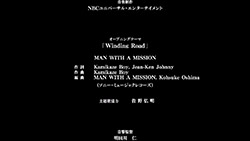 |
 |
ED: 「Winding Road」 by MAN WITH A MISSION

Roar…
https://randomc.net/image/Golden%20Kamuy/Golden%20Kamuy%20-%2001%20-%20Large%2022.jpg
Yay, giant CG bear.
I admit, I lol’d when I saw that ridiculous bear.
https://randomc.net/image/Golden%20Kamuy/Golden%20Kamuy%20-%2001%20-%20Large%2029.jpg
What an abomination.
Just how big is this “bear”? Is this anime set in prehistory times? cool!
I expect to see mammoths, saber tooth tigers and what knot…
Director claims it’s a WIP attempt at stylistic portrayal of a wild bear’s presence. See my post for details.
To be completely fair, even though I made fun of it, the bear at least moved well enough. It’s just that the clash of styles made it look less than alive. It’s something anime can get away with somewhat with mecha, but obviously not in a case like this.
If I may add, the texturing and colorization of the bear is rather reminiscent of the overall feel of impressionist art, as my understand of it currently is
Probably the complaint would be that that stylization is not suitable to be used on the type of 3D models currently used in Japanese animation, in contrast to the various models in the Valkyria Chronicles games which are well-integrated with the overall art style
It’s almost become The Revenant.
LOL!!! my question would be “japan, is it really that EXPENSIVE to stick to hand drawn animation??”
Short answer: yes.
@Brooklyn – I hear it is, simply because hand drawn requires more time and skill to get the movements right. But the biggest reason is time – it’s faster to render something in CG, especially given the time-starved nature of anime production.
Most likely they’ll fix it for Bluray release, if time permits.
To be totally honest despite the bear scene… I was entertained watching this show. Still if anyone is interested…
HOW TO SURVIVE A BEAR ATTACK:
https://www.youtube.com/watch?v=JJAVe57yH-o
The CG bear and wolf were so bad I couldn’t really believe it.
A shame, because I found the first manga chapter interesting enough that I was looking forward to this first episode.
Will still give the next one a chance, but hope to see less CG animals.
Mmm my first guessed eyes say to me, that this bear we see is inspire from an stuffed dead animal. Also they could give here a bit more light. he is really dark
A good start on the whole, with an interesting plot and all the necessary exposition squeezed into a single episode. Looking at the Wikipedia article about the Ainu, I see the extra irony of this being about the search for tattooed Japanese when by then the Ainu’s own traditional tattoos had been outlawed by the Japanese government.
That’s my worst case scenario too. In the mean time, I’m more than happy to give this some more episodes despite the less-than-impressive CGI.
While I do look forward to how much light Golden Kamuy will hopefully shed on the Ainu people and their history, I’m most looking forward to the dynamic between Sugimoto and Asirpa (or is it Ashirpa? My zero-Ainu-knowledge gut feeling says Ashirpa is a closer pronunciation to how Ainu people used to speak naturally). One possibility there is how much Sugimoto’s violent nature is going to affect Asirpa, who so far seems to be a pacifist. I wouldn’t want her to resort to killing someone in order to survive, like Sugimoto always did, but that would be an interesting development if it happens.
I’m hoping Asirpa will be a positive influence on Sugimoto instead, but this may not be the kind of story where idealism is rewarded.
Holy shit, the CGI….I can’t watch this if there is more laughably yet uncomfortably awful CGI. This isn’t to say I do t want to, this is an anime I was pretty excited for but that fucking bear killed my thunder.
Director claims the CG was an attempt at stylistic presence; they’re still trying to make it work. See my post for details.
https://randomc.net/image/Golden%20Kamuy/Golden%20Kamuy%20-%2001%20-%20Large%2022.jpg
Kamuy’s director made the bear CG to “emanate a difference presence (and atmosphere) from the humans.”
https://i.redd.it/gs5eft524xq01.jpg
He also claims they’re still working on trying to blend hand-drawn and 2D together.
“…it’s difficult to (hand-)draw fur like (in the manga), but pure…3D…will cause parts to not blend in with the surroundings…we’re still trying to figure out how to fit it all”.
In a way, he DID succeed in making the bear stand out, just for the wrong reasons!
Hopefully these are just growing pains for the show and future episodes will figure out a way to integrate the CGI better (or not at all).
Easy, the GCI Bear here… His Texture was to Perfect vs the hand drawn texture. Alone his face is more detailed then the entire hand drawn textures
Remember: CGI Textures are way more perfect then hand drawn.. or here they just mess with the GAMA
Solution:
make the CGI Textures more “8 Bit” or give (as example) here the MC better Shadow mapping face and for the cloths
Kamuy will have 12 eps.
https://www.animenewsnetwork.com/daily-briefs/2018-04-02/golden-kamuy-anime-listed-with-12-episodes/.129836
The source manga is still ongoing with no signs of ending yet; this’ll likely have a “go read the manga” ending.
Prior to the Meiji era, Japanese settlers were already in Hokkaido for natural resources.
However, there was a delineation between the samurai settlers and the local Ainu tribes, who formed the majority residents.
Hokkaido’s full annexation by the Meiji was largely a response against Imperial Russia – Tokyo was concerned the Russians would try control Hokkaido first as a stepping stone into the Far East beyond Vladivostok.
http://www.newworldencyclopedia.org/entry/Hokkaid%C5%8D
Either way Ainu indigenous sovereignty was dead – get assimilated into Japanese culture (per history) or get assimilated into Russian culture. I cannot say for certain if being annexed by the Russians would have led to a more favourable outcome for them.
We can only guess, but it’s not like the Tartars met a good end either. These stories all have very similar themes wherever one goes.
If Russia had successfully annexed Hokkaido, I doubt that they would have stopped there. If eventually the whole of Japan had fallen into Russian hands, the history of the 20th century might have been very different indeed because without Pearl Harbor, America may have kept to its isolationist policy and the whole of Europe would have fallen to Hitler. After that, who knows what would have happened.
The Russians cared about Japan’s land about as much as it cared for North America – not very much. The issue is that the venture would not be profitable in trade – and it is important to emphasize that trade, culture, and politics were the principal methods by which Russia leaned on; the military was a support shaft, not the vanguard (and that was their undoing). Basically, it had pioneers and settlers just like the United States, people who wanted to find a new life for themselves on the frontiers – the military would follow these people offering protection from savage tribes, bandits, and rescue from the elements and circumstance. And in return, the government gets a tax on trade.
The Japanese, by contrast, were not a “pioneering” people. Not to say there weren’t any, but most of what passed for “pioneers” didn’t have the physical or diplomatic skills to make it on their own. The Russians learned and made dictionaries of the Ainu language. The Japanese? They did all they could do exterminate it.
Which goes back to “How the F*ck” do the “Ainu” in Japan know anything about the historic Ainu when it’s the Russians who actually preserved the culture – in RUSSIAN?
In a contest of ordinary people going out and turning wilderness into arable land, not to mention winning over the “natives”, the Russians had the Japanese beat hands down.
It’s no wonder the Japanese were so brutal in their conquests wherever they went. It wasn’t that they didn’t know any better (they knew Russians took a dim view of their barbaric behaviour). It was that the Japanese couldn’t win any other way.
My sense is that there are a bunch of Japanophiles who like the idea of a “peaceful” and “powerful” nation who resorts to military force last (as dumb as that is).
Well, to poke their little insecurities, that “peaceful” nation is NOT Japan at the turn of the century.
If anything, it was Russia.
Oh FFS.
Spare me the “Japanese were defending itself” revisionist history.
There was nothing defensive nor subtle about the Japanese conquering Hokkaido, anymore than their other attempts at conquest before and after.
The Russian temperament and settlement culture and “annexation” was nothing like the Japanese. Whereas the Japanese used “kill the chicken to scare the monkey as a matter of habit (sometimes pleasure), the Russians typically lived peaceably – resorting to force ONLY as a last resort, certainly not in an organized military force just to “clear the decks” and ethnically cleanse land for their own settlers (unlike the Japanese). From the Russians living with Aleuts in what is now Alaska, to living with Inuits in what is now Canada, AND LIVING WITH AINU IN EASTERN RUSSIA (all of these have similar genetic traits and heritage), the Russians even inter-married and these “indigenous people” became Russian subjects under the Czar.
I’ve met one family of Russians on business. They have some distinct features of Ainu, though they consider themselves “Russian”, the same way most of the civilized tribes of “American Indian” intermarried and became “American” over the centuries- such that it’s uncouth (typical of Leftists) to call them anything else BUT “Russian” or “American”.
Bottom line: I have no problem with Japan conquering Hokkaido per se; the Ainu (and the Russians that lived there for decades) that lived on Hoikkaido had been unlucky enough to live too close to the Japanese and too far from the Continent and the Russians. The real world is that the land is your’s if you can hold it and develop it for civilized production and maintenance. Those Ainu who lived on territories that the Russians controlled, however, were FAR better off because the Russians saw the possibility of value in the natives – so much so that ironically, the “Ainu” race and culture has diffused into the Russian mainstream. Meanwhile, the Ainu in “Japan” suffered so badly under the Japanese that there was little possibility of common struggle between the two peoples when the Japanese attacked Russia. And as such, the Ainu culture carried on (not really, the Russian family told us that what passes for “genuine” Ainu culture in Japan is actually fakery and charlatans to curry sympathy /shrug) in a pathetic lame state.
Personally, I think the Ainu exist only in history books, and that they bear no more resemblance to today’s “Ainu” other than a genetic facsimile. The informational ancestry has blended mostly into Russian culture on the Peninsula (not necessarily the islands like the Kuriles).
Incidentally, one of the reasons why the Russian Czar “sold” Alaska to the US was because it knew it couldn’t defend its settlers (and the Aleuts) from British and hostile tribal predation (many “natives” were quite savage). That alliance was destroyed when Japan attacked Russia (not the other way around) and the weakened Czar was murdered by the Bolsheviks and spawned the USSR and began a long antagonistic relationship with Communism.
It’s an interesting history – and to twist it into some Japanese fantasy about “Japan the constant victim” does not do it justice…
…but to correct the record, to the degree that the Russians “threatened” Hokkaido, they settled the land, and offered culture, knowledge, trade, and a neighborly attitude to the Ainu, even though they clearly had more military power than Japan or the Ainu at the time before Perry landed.
The Japanese?
They brought the sword to the Ainu.
SO who really “threatened” Hokkaido at the turn of the 19th century?
Japan attacked Russia; not the other way around.
So stick to the facts.
hopefully sugimoto and aspira have a father daughter type of relationship that carries on throughout the series and doesn’t end up with her developing a crush on him and maybe she’ll find a boy her own age to love.
The humans are handdrawn, the wolf is cel-shaded, and the bear is 3DCG…….. What the hell were they smoking when they decided to do that? Why not go one step further and make the background in stop-motion while you’re at it? That will certainly make everything blend in perfectly :p
For me, It’s Shaman King that piqued my interest first.
Here’s hoping that they used up all of their CG money on the bear.
I’m a big fan of the manga and so if it means anything I seriously vouch for the story and urge anyone interested to read it.
Other than that… must admit I’m pretty disappointed in the animation, I mean I guess it can’t be helped but still… I wish it was beautiful with flashes! and bangs! and cool angles! and super-cool punches! like the manga but ahhhh well…
Will have to just make do with the impressive plot (trust me it is), and hope the pacing can do it justice.
I don’t think there’s a ton of bears from what I vaguely remember of the manga, I can stick with it for 12 episodes for the turn-of-the-century action-adventure stuff.
While bears don’t show up in all of Golden Kamuy’s arcs, they do play a prominent role in most of the arcs set in the wild or rural parts of Hokkaido; makes sense when you consider how big a role bears play in Ainu mythology, as this adaptation will probably show.